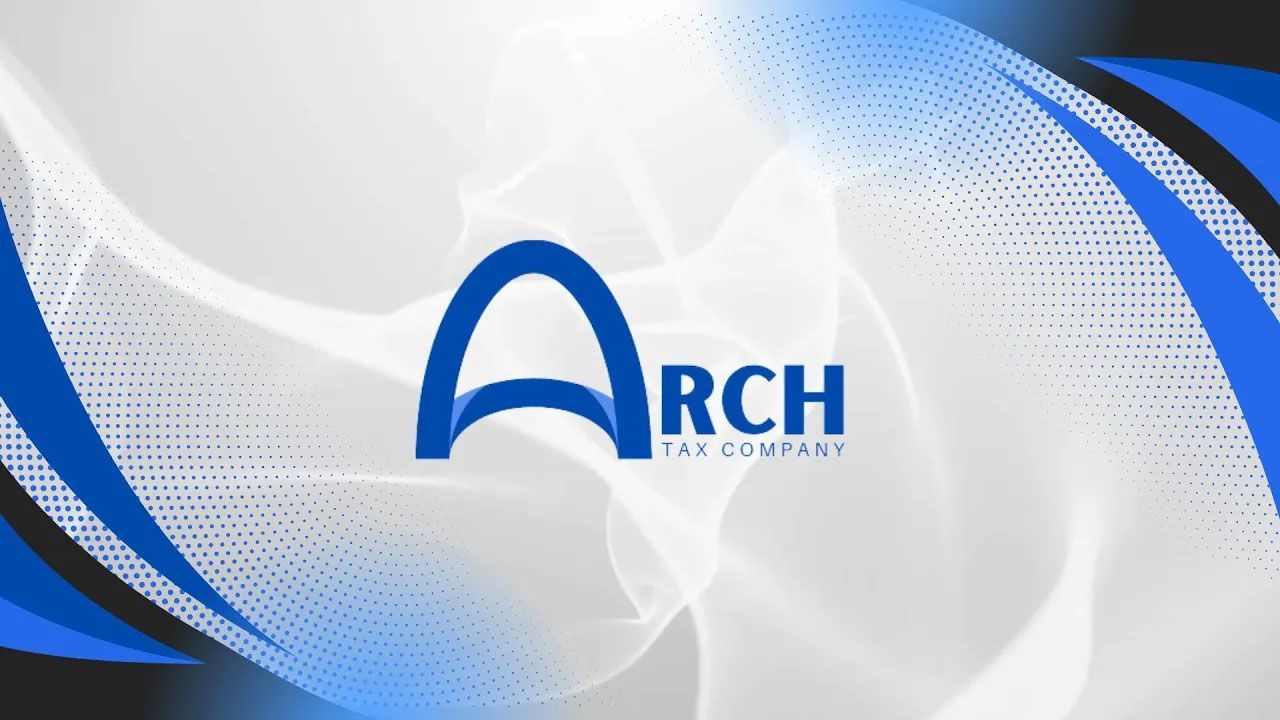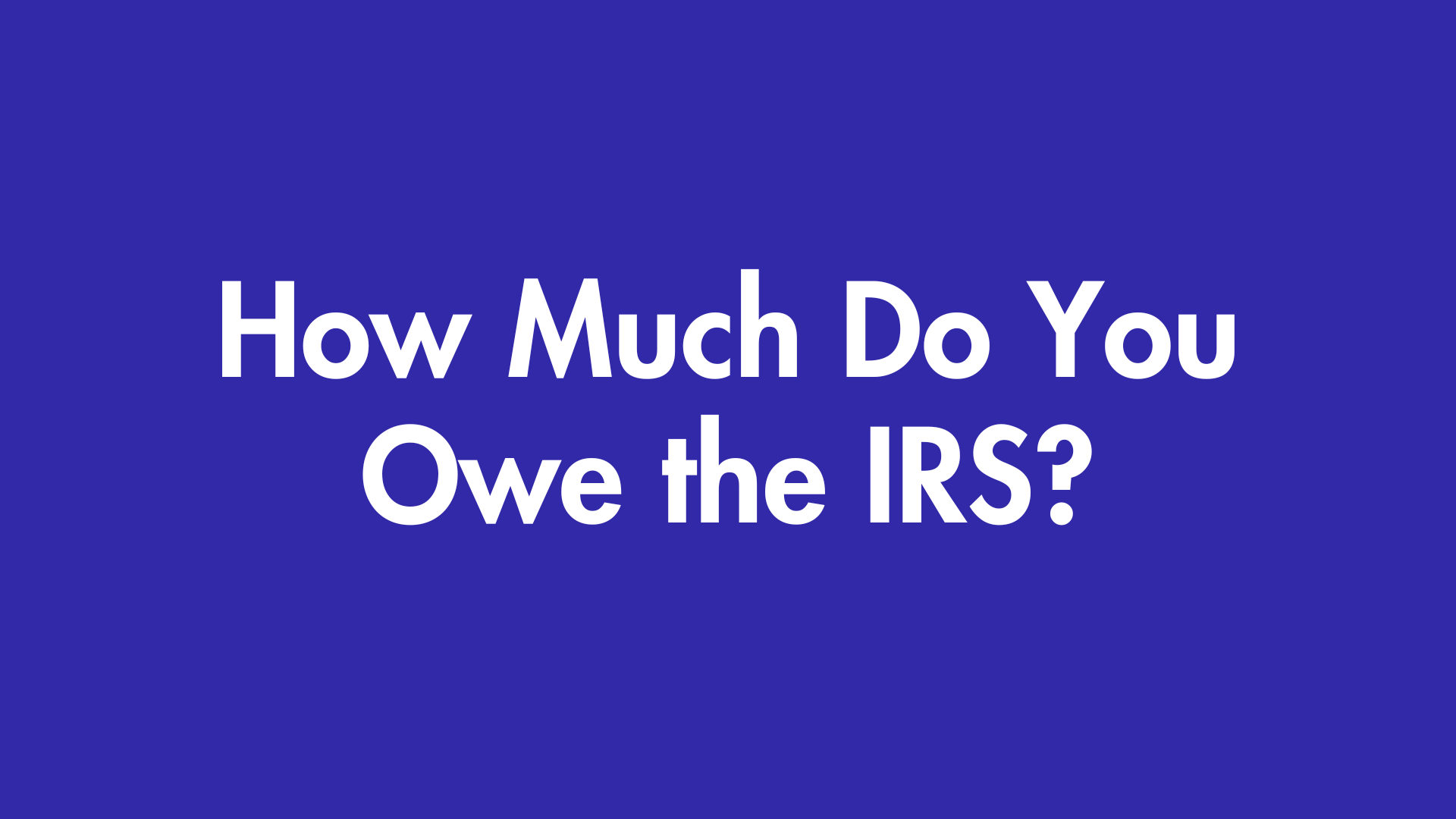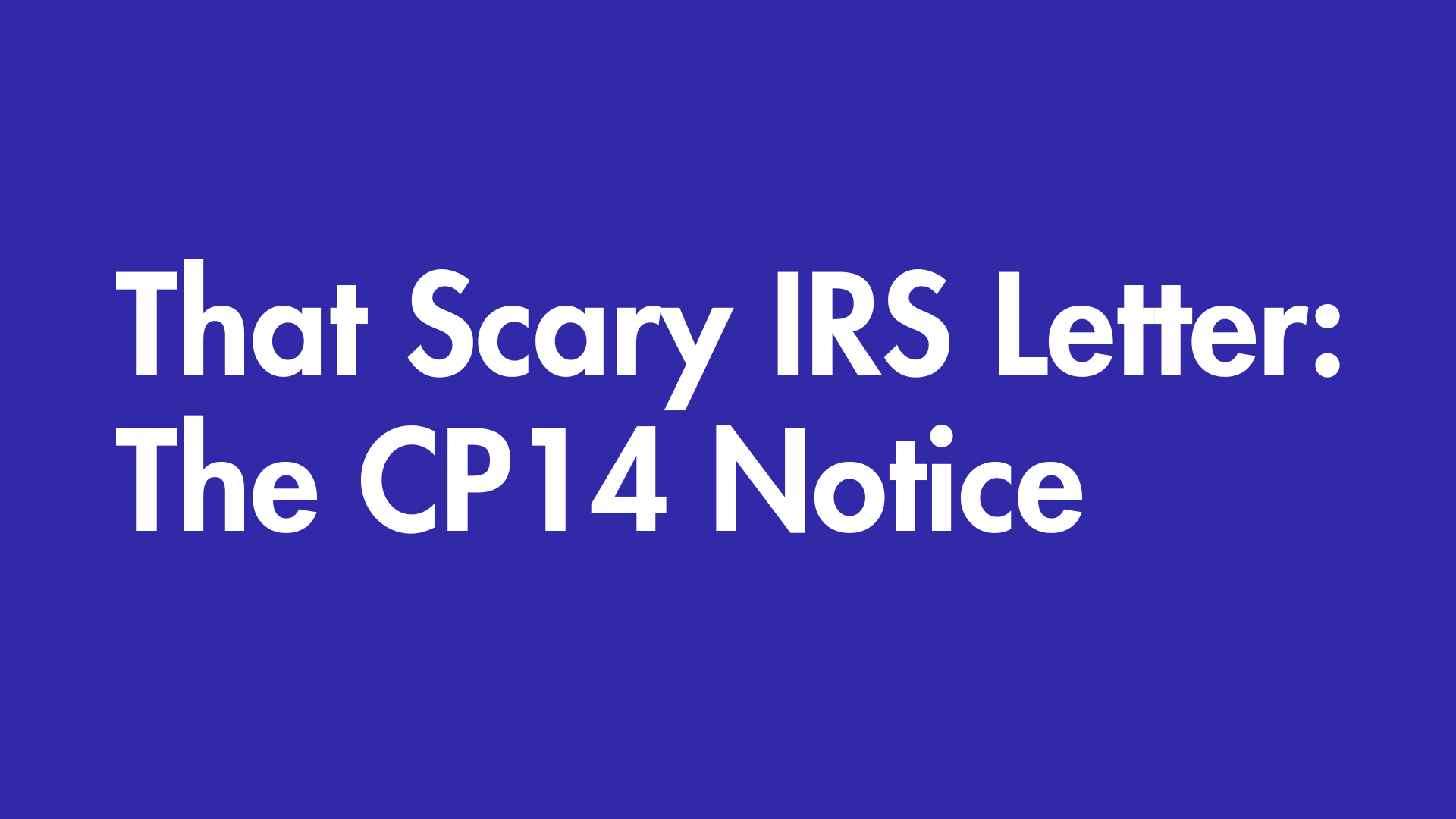Tax Filing 101 for Rideshare & Delivery Drivers
Chad Dickinson • January 15, 2025
Navigating taxes as a rideshare or delivery driver can feel overwhelming, especially if you're new to the gig economy. Whether you drive for Uber, Lyft, DoorDash, Grubhub, or similar platforms, understanding the tax process is crucial to maximizing your income and avoiding costly mistakes.
In this guide, we'll break down the essentials you need to know for filing your taxes as a rideshare or delivery driver.
Watch Our Video for a Quick Overview
Why Filing Taxes Is Different for Rideshare and Delivery Drivers
As a rideshare or delivery driver, you’re considered self-employed in the eyes of the IRS. This means you're responsible for reporting your income and paying self-employment taxes. It also means you have access to numerous deductions to reduce your taxable income.
Key Documents You’ll Need
Before you start filing your taxes, make sure you gather these essential documents:
- Income Summary: Generated by your rideshare/delivery app, showing your earnings, number of trips, and fees deducted.
- Mileage Records: Track your mileage for tax deductions. Many apps, like Uber, provide this information, but using a mileage tracking app can help ensure accuracy.
- Expense Records: Keep receipts for work-related expenses like phone bills, tolls, parking, supplies, and meals.
Tax Deductions for Rideshare and Delivery Drivers
Understanding what you can deduct is key to saving money on your taxes. Here are some common deductions:
- Mileage: Deduct either the standard mileage rate or actual expenses (gas, maintenance, insurance).
- Phone and Internet Costs: Deduct a portion of your phone bill and data plan used for work.
- Supplies: Includes items like phone mounts, chargers, and delivery bags.
- Tolls and Parking: Deduct these if not reimbursed by the platform.
Tips for Simplifying Your Tax Filing
- Keep Organized Records: Regularly update your income and expense records to avoid last-minute stress.
- Use Tax Software or Hire a Professional: Consider software designed for self-employed individuals or consult a tax professional.
- Set Aside Money for Taxes: Remember to save for self-employment taxes (Social Security and Medicare) to avoid surprises.
Ready to File Your Taxes?
Preparing taxes as a rideshare or delivery driver doesn’t have to be daunting. By staying organized and taking advantage of deductions, you can maximize your earnings and minimize your tax bill.
If you have questions or need help filing your taxes, Arch Tax is here for you!

The passage of the One Big Beautiful Bill Act (OBBBA) has reshaped the tax landscape in a big way. Many tax cuts that were set to expire at the end of 2025 are now permanent, and several new planning opportunities have opened up. With the year quickly coming to a close, now is the ideal time to review your tax situation and see what steps you can take to reduce your 2025 tax bill. Before making any moves, work with your professional advisors to estimate what you’ll owe this year and identify which strategies best fit your situation. The earlier you begin, the more flexibility you’ll have to put these plans in motion before December 31. 1. Establish Your Tax Baseline Start by having your tax advisor prepare a pro forma 2025 tax return. This gives you a clear picture of where you stand—your projected income, deductions, and how different decisions may affect your final tax bill. If you're working with a financial team, request a year-to-date tax summary of your investment accounts. With this snapshot, you’ll have a solid foundation for determining which strategies are worth implementing before year-end. 2. Evaluate These Tax-Smart Strategies Harvest Tax Losses Markets have generally performed well this year, so you may be sitting on more taxable gains than expected. Tax-loss harvesting can help offset these gains by selling investments at a loss before year-end. If you want to repurchase the same investment, be sure to avoid the wash sale rule , which disallows a loss if you buy a substantially identical security within 30 days before or after the sale. One workaround is to double up —buy more now, wait 30+ days, then sell the original losing position. Important date: November 28, 2025 (the day after Thanksgiving) is the final day to sell at a loss and have it count for the 2025 tax year. Loss harvesting isn’t just a year-end task. Even in strong markets, individual positions may decline, creating opportunities throughout the year. Maximize Charitable Contribution Deductions If you plan to make charitable gifts, timing matters. Transfers of stock or other assets can take time to complete, so check with your financial institutions to ensure the donation is finalized before December 31. Because OBBBA imposes new charitable deduction limitations starting in 2026 , it may be advantageous to front-load charitable giving in 2025 . Beginning in 2026: Itemized charitable deductions are reduced by 0.5% of AGI Total itemized deductions for taxpayers in the 37% bracket are capped at 35% of AGI For high-income taxpayers, that may make a 2025 donation more valuable than the same gift in 2026. If you’re undecided about which charity to support, consider a donor-advised fund (DAF) . You receive the deduction immediately, but you can distribute the funds to charities later. Optimize Estimated Tax Payments Many high-income taxpayers must make quarterly estimated tax payments to avoid underpayment penalties. You can meet the requirements using the “lesser of” safe harbor : 110% of your prior year’s tax liability, or 90% of your current year’s projected tax liability If you expect your 2025 taxes to be significantly higher than in 2024, it may be strategic to base your estimates on 2024’s lower liability and invest the difference in short-term, principal-protected fixed-income investments. This lets you earn some return on money you’ll eventually pay in taxes. 3. Optimize Retirement, Compensation, and Benefits Max Out Retirement Contributions For 2025, the contribution limits are: IRAs: $7,000 (or $8,000 if age 50+) 401(k)/403(b): $23,500 $31,000 for those age 50+ $34,750 for those turning age 60–63 in 2025 If you’re eligible, consider whether a Roth conversion makes sense—especially if you expect higher income tax rates in the future and can pay the conversion tax using funds outside the IRA. Take Required Minimum Distributions (RMDs) Anyone age 73 or older generally must take RMDs by December 31 each year. If charity is part of your plan, a qualified charitable distribution (QCD) from your IRA can satisfy part or all of your RMD. This strategy, however, may not always be the most tax-efficient depending on your broader financial picture. For inherited IRAs where the owner died after 2019, new regulations beginning in 2025 require many beneficiaries to take annual distributions over a 10-year period , with the remaining balance distributed in year 10. The rules are complex, so work closely with your tax advisor. Consider Deferring Compensation If your employer offers a deferred compensation plan, election deadlines typically fall before December 31, 2025 for 2026 income deferrals. Deferring compensation delays income taxation until you receive the funds, potentially allowing you to take advantage of future lower tax rates. However, deferred compensation is subject to employer credit risk, so weigh the pros and cons carefully. Review Stock Options Executives with stock options may want to consider exercising some in 2025. Strong candidates for exercise include options that are: Deep in the money On high-dividend stocks Close to expiration Your advisory team can prepare an options breakeven analysis to help you decide. 4. Make Tax-Efficient Gifts to Family Use Lifetime Exclusion While It Lasts The current gift and estate tax exclusion is: $13.99 million per individual $27.98 million per married couple These increase to $15 million ($30 million for couples) in 2026 under OBBBA. If you anticipate a taxable estate and have unused exemption, making large gifts now may help lock in additional tax-free transfer capacity. Take Advantage of the Annual Gift Exclusion For 2025, you may give: $19,000 per recipient (individual) $38,000 per recipient (married couple electing to split gifts) This exclusion is use-it-or-lose-it —unused amounts cannot be carried over to future years. Many families use this strategy to fund 529 education plans , where earnings grow tax-free when used for qualified education expenses. 5. Work With Tax Professionals to Finalize Your Plan Year-end tax planning is full of opportunities—but also details, deadlines, and complex rules. Arch Tax can help determine which actions make the most sense for your personal and financial goals. Starting now gives you time to implement strategies that may strengthen your financial position and reduce your overall tax liability. Schedule your free consultation today

It’s a question that can send a shiver down your spine, a classic nail-biter that pops up right around tax season: “How much do I really owe the IRS?” Let’s be honest, navigating the world of taxes can feel like trying to solve a Rubik’s Cube in the dark. Whether you’ve hit a few financial bumps in the road or simply lost track of your tax returns, figuring out your standing with the Internal Revenue Service (IRS) is the first crucial step toward getting your financial house in order. This guide will walk you through the different ways to uncover that magic number, from sleuthing online to making a good old-fashioned phone call. And once you know what you’re up against, we’ll even explore some expert-backed strategies for settling your score with Uncle Sam. Cracking the Code: How to Figure Out What You Owe Finding out your tax liability is easier than you might think. The IRS has several methods available to help you get the information you need. Here’s a breakdown of your options: Your Online IRS Account The quickest and most convenient way to get to the bottom of your tax situation is by using the IRS’s online tools. The “View Your Tax Account” feature on the IRS website is your one-stop shop for all things tax-related. To get started, you’ll need to create an account and verify your identity. You’ll need some personal information on hand, like your Social Security number, date of birth, and the filing status and mailing address from your most recent tax return. Once you’re in, you’ll have access to a wealth of information, including: Your payment history Any outstanding balances you owe Information about your payment plans Digital copies of certain IRS notices This is the fastest way to see what you owe and even make payments online. Just be mindful of any potential bank fees associated with online payments. A Little Help From a Friend: Calling the IRS If you prefer a more personal touch, you can always give the IRS a call. The general inquiry line is 1-800-829-1040. Before you dial, make sure you have your personal information and a copy of your most recent tax return handy. An IRS representative can help you with a balance inquiry, explain any outstanding balances, and walk you through your payment options. While it might take a bit of patience to get through, speaking with a real person can be incredibly helpful, especially if you have questions about your tax records or payment plans. The Paper Trail: Reaching Out by Mail For those who appreciate the tangible nature of snail mail, you can also request your tax information by mail. You’ll need to send a written request to the IRS, and it’s a good idea to use the address listed on the most recent notice you’ve received. If you don’t have a recent notice, you can find the correct address on the IRS website. Keep in mind that this is the slowest method, and with taxes, time is of the essence. Unpaid taxes can quickly accumulate penalties and interest, so it’s best to use a faster method if possible. You’ve Got the Number, Now What? Strategies for Settling Your Tax Bill Knowing how much you owe is half the battle. Now it’s time to come up with a plan to pay it off. Here are some effective strategies for settling your tax bill: File on Time, Every Time: The easiest way to avoid getting into tax trouble is to file your taxes on time, every year. This will help you avoid late filing penalties. Explore Payment Options: If you can’t pay your entire tax bill at once, don’t panic. The IRS offers several payment options, including installment agreements and offers in compromise. You can apply for these online or with the help of an IRS representative. Use Your Refund to Your Advantage: If you’re expecting a tax refund, you can have the IRS apply it directly to your outstanding balance. Look into Penalty Waivers: If you have a good compliance history, you may be eligible for a first-time penalty waiver. It’s worth looking into! Don’t Be Afraid to Ask for Help: If you’re feeling overwhelmed, consider seeking advice from a tax professional. They can help you navigate the complexities of the tax system and find the best solution for your unique situation. Frequently Asked Questions How long does the IRS have to collect unpaid taxes? The IRS generally has 10 years to collect unpaid taxes from the date they were assessed. This is known as the Collection Statute Expiration Date (CSED). However, certain actions, like entering into an installment agreement or filing for bankruptcy, can extend this period. Should I take out a loan to pay my taxes? This is a tricky one. While a loan can provide immediate relief and help you avoid IRS penalties and interest, it’s not without its own risks. You’ll need to be sure you can afford the loan repayments, and you’ll want to compare the interest rate on the loan to the penalties and interest charged by the IRS. It’s always a good idea to consult with a financial advisor before making this decision. How can I check my IRS balance myself? As we’ve covered, you have three main options: online through the “View Your Tax Account” feature on the IRS website, by phone at 1-800-829-1040, or by mail. For the fastest and most comprehensive information, the online portal is your best bet. Dealing with the IRS can be stressful, but it doesn’t have to be a nightmare. By taking a proactive approach and using the resources available to you, you can take control of your tax situation and get back on the path to financial freedom. You don’t have to face the IRS alone. Contact Arch Tax today and we’ll help you understand your options and take the next step s forward .

Every year, as tax season begins, millions of Americans diligently gather their documents, determined to file accurately and on time. Yet many unwittingly fall into procedural traps—set not by malice, but by the sheer complexity of the U.S. tax code. From the perspective of a tax resolution company who’s seen countless taxpayers blindsided by unexpected notices and penalties, it’s clear the IRS has a playbook. Automated systems, targeted audits, and strict procedural rules can catch even the most honest individuals off guard. This isn’t about scare tactics—it’s about awareness. Understanding where these traps lie is the first step toward navigating tax season with confidence. Below are five of the most common IRS traps, along with practical steps to help you steer clear. Trap #1: The Automated Refund Delay Trap What It Is: The IRS withholds refunds from millions of taxpayers for “additional review,” a process triggered automatically by sophisticated error-detection algorithms. While most refunds are issued within 21 days, a flagged return can be delayed for months with little communication. Why It’s a Trap: Even minor mismatches between your reported income and what the IRS receives from employers (W-2s) or clients (1099s) can freeze your refund. Common triggers include small data entry errors, incorrect Social Security numbers, or deductions that look statistically unusual for your income level. How to Avoid It: Cross-check every figure on your return before filing. E-file early—late-season filers face heavier scrutiny—and always use direct deposit. A paper check is over 16 times more likely to be lost or stolen, which can prolong the wait even further. Trap #2: The High-Stakes Credit Crackdown (EITC & CTC) What It Is: The IRS aggressively audits returns claiming the Earned Income Tax Credit (EITC) and Child Tax Credit (CTC) . These credits are vital for working families, yet have some of the highest error rates in the system. Why It’s a Trap: Because of those error rates, the IRS effectively operates on a “prove you’re right” basis. EITC claims are audited more than four times as often as typical individual returns—and certain demographics face disproportionate scrutiny. How to Avoid It: Be audit-ready from day one. Keep: Proof of income (pay stubs, 1099s, bank statements) Proof of residency for dependents (school, medical, or official records) Don’t file until all documentation is organized. If audited, clear proof can quickly resolve the issue in your favor. Trap #3: The Gig Economy Reporting Trap (1099-K) What It Is: Third-party payment apps like PayPal, Venmo, and Cash App now report income for goods and services through Form 1099-K. Though the threshold has changed repeatedly, the reporting system remains firmly in place. Why It’s a Trap: Many gig workers and side-hustlers assume small amounts of income “don’t count.” The IRS’s automated matching software disagrees—discrepancies between what platforms report and what you file are automatically flagged. How to Avoid It: Report all income, even if you don’t receive a 1099-K. Track deductible business expenses carefully—mileage, phone, supplies, and other legitimate costs—to reduce taxable income. Always keep receipts and logs to substantiate your claims. Trap #4: The “Voluntary” Disclosure Illusion What It Is: Sometimes the IRS sends friendly-sounding letters encouraging taxpayers to “voluntarily” correct past filings or unpaid balances. Why It’s a Trap: The IRS generally has 10 years from the date a tax is assessed to collect it—known as the Collection Statute Expiration Date (CSED) . When you respond to these letters, file old returns, or make payments, you can accidentally restart or extend that 10-year clock—giving the IRS more time to pursue you with added penalties and interest. How to Avoid It: Never reply to an old-debt notice without professional advice. A tax resolution expert can determine your CSED and guide you on whether to respond strategically—or not at all. Trap #5: The Resolution Runaround (Offer in Compromise) What It Is: The IRS Fresh Start Program , especially the Offer in Compromise (OIC) , is promoted as a chance to settle tax debt for less than you owe. Why It’s a Trap: OIC qualification rules are deliberately strict, and only about 20–40% of applications are approved. Many taxpayers apply without understanding the IRS’s complex financial formulas or fail to provide every required document. Rejection not only wastes time and money but also hands the IRS your complete financial profile. How to Avoid It: Before applying, get a realistic assessment of your eligibility. Tools like Arch Tax’s Resolution Assistant can show which programs you actually qualify for and save you from unnecessary exposure. Conclusion: Navigating the Maze with Confidence The IRS doesn’t have to deceive taxpayers—the system itself is complicated enough to trap the unprepared. Awareness, documentation, and expert guidance are your strongest defenses. At Arch Tax , we help taxpayers navigate the complexities before they turn into costly problems. If you’re facing an IRS issue—or just want peace of mind this tax season—see which programs and protections fit your situation. Click here to schedule a free consultation





